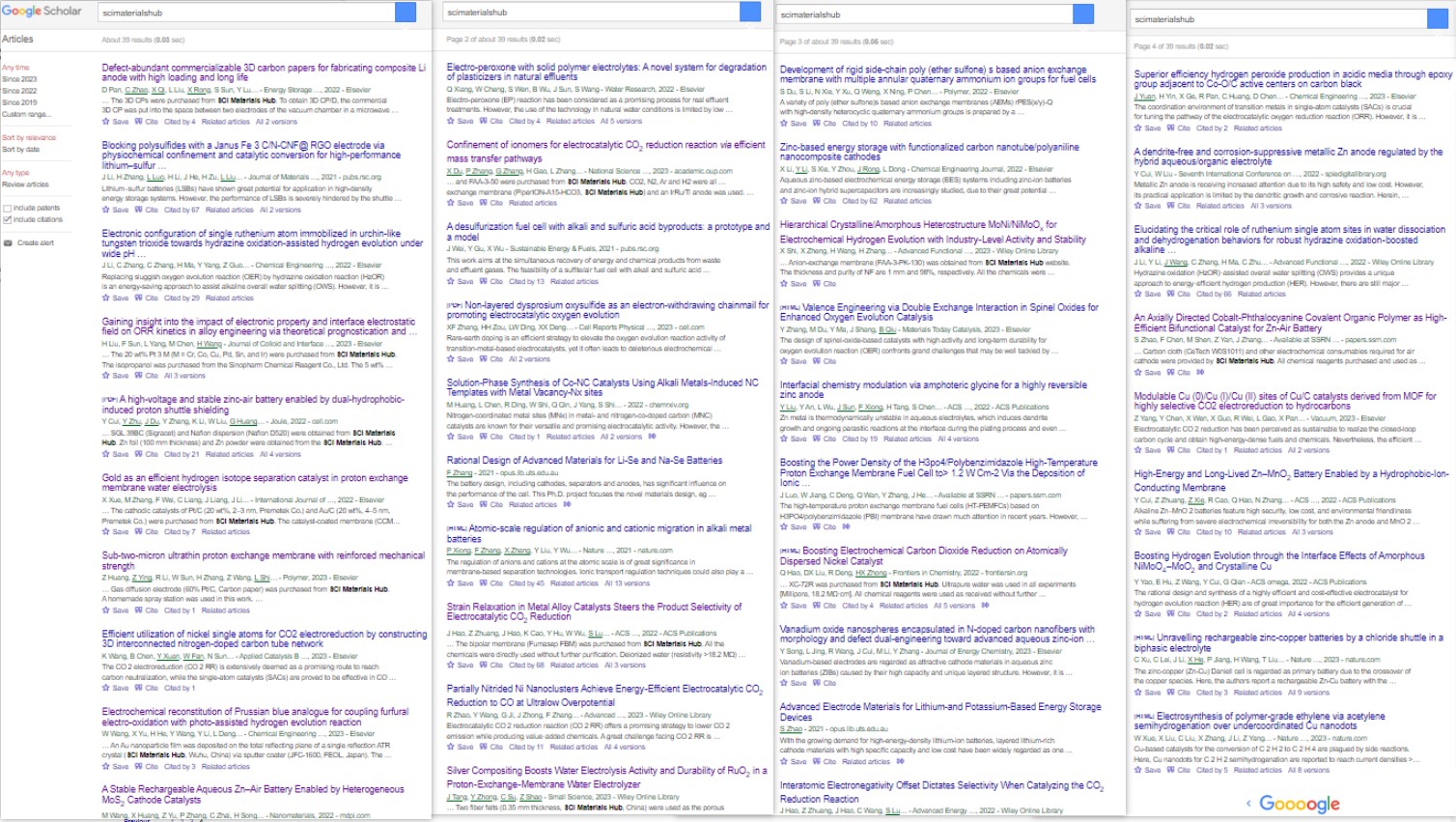
Youveim® provides a wide range of high-performance aluminum foil products, widely applied in lithium-ion batteries, supercapacitors, and other electrochemical devices as cathode current collectors.
The products are classified into four categories according to surface treatment and carbon coating structure:
Description: One side is shiny, and the other side is matte. This is the most basic form of battery-grade aluminum foil.
Key Features:
Excellent conductivity and tensile strength
Good compatibility and adhesion with active materials
Stable surface tension suitable for coating processes
Applications: R&D, pilot testing, laboratory batteries; suitable for both winding and stacking cell structures.
Typical Parameters (16 μm × 195 mm):
Areal density: 42 g/m²
Tensile strength: 220 MPa
Elongation: 2.2 %
Surface wetting tension: 30 N/m
Alloy grade: 1235-H16/H18
Purity: Al ≥ 99.8%
Description: Both sides are bright and flat, offering higher conductivity and corrosion resistance.
Key Features:
Symmetric double-side structure with low roughness
Enhanced corrosion resistance and interfacial stability
High ductility and mechanical strength
Applications: Industrial-grade cathode current collectors for lithium-ion batteries with high consistency requirements.
Typical Parameters (16 μm × 196 mm):
Areal density: 42 g/m²
Tensile strength: 220 MPa
Elongation: 2.2 %
Surface wetting tension: 30 N/m
Alloy grade: 1235-H16/H18
Description: Conductive carbon coating is applied on one side to improve adhesion and electrical conductivity.
Key Features:
Conductive carbon coating enhances adhesion with active material
Reduces interfacial resistance, improving cycling stability
Bare aluminum on the reverse side, balancing conductivity and structural integrity
Applications: High-power density batteries, high-impedance cathode materials (e.g., high-nickel, LFP), solid-state batteries.
Typical Parameters (16 μm × 260 mm):
Carbon coating thickness: 1 μm
Coating width: 230 mm
Areal density: 41.8 ± 2 g/m²
Surface wettability: ≥50 dyne
Wiping test: >200 times, no shedding
Electrolyte immersion test: No shedding after 24h
Description: Both sides are coated with carbon, forming a continuous conductive network with lower interfacial resistance.
Key Features:
Double-sided coating enhances electron transport
Improves cycling life and rate performance
Prevents corrosion of the aluminum substrate and improves electrode stability
Applications: Power batteries, pouch cells, multi-electrode structures, and high-rate discharge applications.
Typical Parameters (16 μm × 260 mm):
Carbon coating thickness: 1 + 1 μm
Coating width: 230 mm
Areal density: 42 ± 2 g/m²
Surface wettability: ≥40 dyne (measured 55)
Elongation: >1.5% (measured 2.83%)
Tensile strength: ≥180 N/mm² (measured 199.9)
Wiping test: >200 times, no shedding
Electrolyte immersion: No shedding after 24h
| Item | Single-Side Shiny | Double-Side Shiny | Single-Side Carbon-Coated | Double-Side Carbon-Coated |
|---|---|---|---|---|
| Total thickness (μm) | 15–16 | 15–16 | 15–16 | 15–16 |
| Carbon layer (μm) | — | — | 1 | 1 + 1 |
| Areal density (g/m²) | 42 | 42 | 41.8 ± 2 | 42 ± 2 |
| Tensile strength (MPa) | ≥180 (220 actual) | ≥180 (220 actual) | ≥180 (200 actual) | ≥180 (200 actual) |
| Elongation (%) | >1.5 (2.2) | >1.5 (2.2) | >1.5 (2.8) | >1.5 (2.8) |
| Wetting tension (dyne) | ≥30 | ≥30 | ≥50 | ≥40 (55 actual) |
| Coating width (mm) | — | — | 230 ± 1 | 230 ± 1 |
| Foil width (mm) | 195/196 | 195/196 | 260 ± 1 | 260 ± 1 |
| Edge margin (mm) | — | — | 15 ± 1 | 15 ± 1 |
| Wiping test | — | — | >200 times, no shedding | >200 times, no shedding |
| Electrolyte test | — | — | No shedding | No shedding |
| Standard | GB/T 1398-2010 | GB/T 1398-2010 | Enterprise Standard | Enterprise Standard |
| Applications | R&D, pilot test | Industrial battery | High-power cathodes | High-rate, pouch battery |
📦 Supply Form:
Roll supply, standard lengths: 20 m, 50 m (customized available)
Thickness, width, and coating schemes can be customized upon request

📧 Email: contact@scimaterials.cn
📞 WhatsApp & Tel: +86 153-7569-8751
🔗 Place quick orders on our eBay / Amazon / Alibaba stores.
🌐 We ship worldwide via DHL, FedEx, UPS, SF-Express, or other requested carriers.
📦 Bulk quantities with discount available upon request.
💳 Payment methods accepted: Bank Wire Transfer, PayPal, Credit Card (via Taobao), Alipay, WeChat Pay
| Product Model | Specifications | 1m | 20m | 1kg |
|---|---|---|---|---|
| Youveim® AS16a Single-Side Shiny Aluminum Foil | Thickness 16 μm × Width 195 mm | / | $29 | $99 |
| Youveim® AS30a Single-Side Shiny Aluminum Foil | Thickness 30 μm × Width 100 mm | $10 | / | $99 |
| Youveim® AD16a Double-Side Shiny Aluminum Foil | Thickness 16 μm × Width 196 mm | / | $29 | $99 |
| Youveim® ASC16a Single-Side Carbon-Coated Aluminum Foil | Thickness 16μm + Carbon Layer 1μm × Width 260mm (Coating Width 230mm) | / | $99 | $299 |
| Youveim® ADC16a Double-Side Carbon-Coated Aluminum Foil | Thickness 16μm + Carbon Layer 1+1μm × Width 260mm (Coating Width 230mm) | / | $99 | $299 |
📌 Notes:
Standard supply forms: 1m, 20m, 1kg rolls.
Custom thickness, width, and length are available upon request.
Prices are FOB, in USD, packaging included.
Partial references citing our materials (from Google Scholar)

Carbon Dioxide Reduction
1. ACS Nano Strain Relaxation in Metal Alloy Catalysts Steers the Product Selectivity of Electrocatalytic CO2 Reduction
The bipolar membrane (Fumasep FBM) in this paper was purchased from SCI Materials Hub, which was used in rechargeable Zn-CO2 battery tests. The authors reported a strain relaxation strategy to determine lattice strains in bimetal MNi alloys (M = Pd, Ag, and Au) and realized an outstanding CO2-to-CO Faradaic efficiency of 96.6% with outstanding activity and durability toward a Zn-CO2 battery.
2. Front. Chem. Boosting Electrochemical Carbon Dioxide Reduction on Atomically Dispersed Nickel Catalyst
In this paper, Vulcan XC-72R was purchased from SCI Materials Hub. Vulcan XC 72R carbon is the most common catalyst support used in the anode and cathode electrodes of Polymer Electrolyte Membrane Fuel Cells (PEMFC), Direct Methanol Fuel Cells (DMFC), Alkaline Fuel Cells (AFC), Microbial Fuel Cells (MFC), Phosphoric Acid Fuel Cells (PAFC), and many more!
3. Adv. Mater. Partially Nitrided Ni Nanoclusters Achieve Energy-Efficient Electrocatalytic CO2 Reduction to CO at Ultralow Overpotential
An AEM membrane (Sustainion X37-50 Grade RT, purchased from SCI Materials Hub) was activated in 1 M KOH for 24 h, washed with ultra-purity water prior to use.
4. Adv. Funct. Mater. Nanoconfined Molecular Catalysts in Integrated Gas Diffusion Electrodes for High-Current-Density CO2 Electroreduction
In this paper (Supporting Information), an anion exchanged membrane (Fumasep FAB-PK-130 obtained from SCI Materials Hub (www.scimaterials.cn)) was used to separate the catholyte and anolyte chambers.
SCI Materials Hub: we also recommend our Fumasep FAB-PK-75 for the use in a flow cell.
5. Appl. Catal. B Efficient utilization of nickel single atoms for CO2 electroreduction by constructing 3D interconnected nitrogen-doped carbon tube network
In this paper, the Nafion 117 membrane was obtained from SCI Materials Hub.
In this paper, Proton exchange membrane (Nafion 117), Nafion D520, and Toray 060 carbon paper were purchased from SCI Materials Hub.
7. National Science Review Confinement of ionomer for electrocatalytic CO2 reduction reaction via efficient mass transfer pathways
An anion exchange membrane (PiperION-A15-HCO3) was obtained from SCI Materials Hub.
8. Catalysis Communications Facilitating CO2 electroreduction to C2H4 through facile regulating {100} & {111} grain boundary of Cu2O
Carbon paper (TGPH060), membrane solution (Nafion D520), and ionic membrane (Nafion N117) were obtained from Wuhu Eryi Material Technology Co., Ltd (a company under SCI Materials Hub).
Batteries
1. J. Mater. Chem. A Blocking polysulfides with a Janus Fe3C/N-CNF@RGO electrode via physiochemical confinement and catalytic conversion for high-performance lithium–sulfur batteries
Graphene oxide (GO) in this paper was obtained from SCI Materials Hub. The authors introduced a Janus Fe3C/N-CNF@RGO electrode consisting of 1D Fe3C decorated N-doped carbon nanofibers (Fe3C/N-CNFs) side and 2D reduced graphene oxide (RGO) side as the free-standing carrier of Li2S6 catholyte to improve the overall electrochemical performance of Li-S batteries.
This paper used more than 10 kinds of materials from SCI Materials Hub and the authors gave detailed properity comparsion.
The commercial IEMs of Fumasep FAB-PK-130 and Nafion N117 were obtained from SCI Materials Hub.
Gas diffusion layers of GDL340 (CeTech) and SGL39BC (Sigracet) and Nafion dispersion (Nafion D520) were obtained from SCI Materials Hub.
Zn foil (100 mm thickness) and Zn powder were obtained from the SCI Materials Hub.
Commercial 20% Pt/C, 40% Pt/C and IrO2 catalysts were also obtained from SCI Materials Hub.
3. Journal of Energy Chemistry Vanadium oxide nanospheres encapsulated in N-doped carbon nanofibers with morphology and defect dual-engineering toward advanced aqueous zinc-ion batteries
In this paper, carbon cloth (W0S1011) was obtained from SCI Materials Hub. The flexible carbon cloth matrix guaranteed the stabilization of the electrode and improved the conductivity of the cathode.
4. Energy Storage Materials Defect-abundant commercializable 3D carbon papers for fabricating composite Li anode with high loading and long life
The 3D carbon paper (TGPH060 raw paper) were purchased from SCI Materials Hub.
5. Nanomaterials A Stable Rechargeable Aqueous Zn–Air Battery Enabled by Heterogeneous MoS2 Cathode Catalysts
Nafion D520 (5 wt%), and carbon paper (GDL340) were received from SCI-Materials-Hub.
Carbon cloth (W0S1011) and other electrochemical consumables required for air cathode were provided by SCI Materials Hub.
Oxygen Reduction Reaction
1. J. Chem. Eng. Superior Efficiency Hydrogen Peroxide Production in Acidic Media through Epoxy Group Adjacent to Co-O/C Active Centers on Carbon Black
In this paper, Vulcan XC 72 carbon black, ion membrane (Nafion N115, 127 μL), Nafion solution (D520, 5 wt%), and carbon paper (AvCarb GDS 2230 and Spectracarb 2050A-1050) were purchased from SCI Materials Hub.
2. Journal of Colloid and Interface Science Gaining insight into the impact of electronic property and interface electrostatic field on ORR kinetics in alloy engineering via theoretical prognostication and experimental validation
The 20 wt% Pt3M (M = Cr, Co, Cu, Pd, Sn, and Ir) were purchased from SCI Materials Hub. This work places emphasis on the kinetics of the ORR concerning Pt3M (M = Cr, Co, Cu, Pd, Sn, and Ir) catalysts, and integrates theoretical prognostication and experimental validation to illuminate the fundamental principles of alloy engineering.
Water Electrolysis
1. International Journal of Hydrogen Energy Gold as an efficient hydrogen isotope separation catalyst in proton exchange membrane water electrolysis
The cathodic catalysts of Pt/C (20 wt%, 2–3 nm) and Au/C (20 wt%, 4–5 nm) were purchased from SCI Materials Hub.
2. Small Science Silver Compositing Boosts Water Electrolysis Activity and Durability of RuO2 in a Proton-Exchange-Membrane Water Electrolyzer
Two fiber felts (0.35 mm thickness, SCI Materials Hub) were used as the porous transport layers at both the cathode and the anode.
3. Advanced Functional Materials Hierarchical Crystalline/Amorphous Heterostructure MoNi/NiMoOx for Electrochemical Hydrogen Evolution with Industry-Level Activity and Stability
Anion-exchange membrane (FAA-3-PK-130) was obtained from SCI Materials Hub website.
Fuel Cells
1. Polymer Sub-two-micron ultrathin proton exchange membrane with reinforced mechanical strength
Gas diffusion electrode (60% Pt/C, Carbon paper) was purchased from SCI Materials Hub.
Characterization
1. Chemical Engineering Journal Electrochemical reconstitution of Prussian blue analogue for coupling furfural electro-oxidation with photo-assisted hydrogen evolution reaction
An Au nanoparticle film was deposited on the total reflecting plane of a single reflection ATR crystal (SCI Materials Hub, Wuhu, China) via sputter coater.

|
We Provide A Broad Range of Materials, Instruments & Solutions in Advanced Science and Technologies | About Us |



